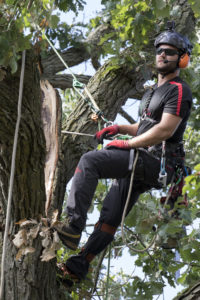How to Prepare for your Arborist Visit

Some people wonder what they should do before their arborist team arrives. It may not be every day that you have an educated tree guy or gal show up, so here’s a few small things that your arborist will truly appreciate having done before they arrive.
1. Pet droppings: Please pick up your pet’s droppings. Sometimes, with a wave of our magical chainsaws, we can have the brush go straight from the tree to the chipper without touching the ground, but most of the time, someone is walking through your yard. It not only gets on our boots, but our hands too! When we climb, our hands typically end up where our feet were. Now, don’t feel bad if your cutie-pie puppy planted a land mine for us just as you leave for work, we understand, most of us have fluff balls of fun at home, too. So thank you for helping us keep our boots, hands, and lunches free of digested dog food.
Read More



